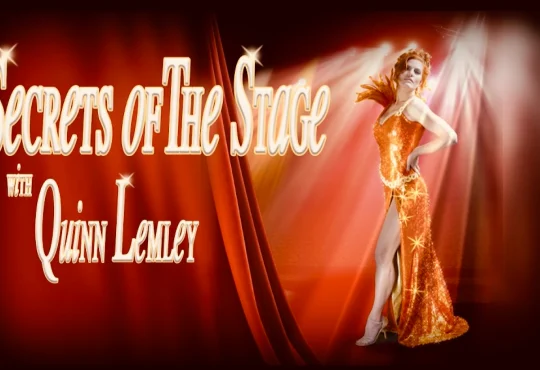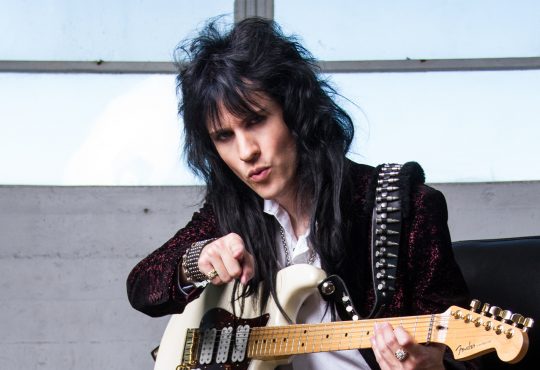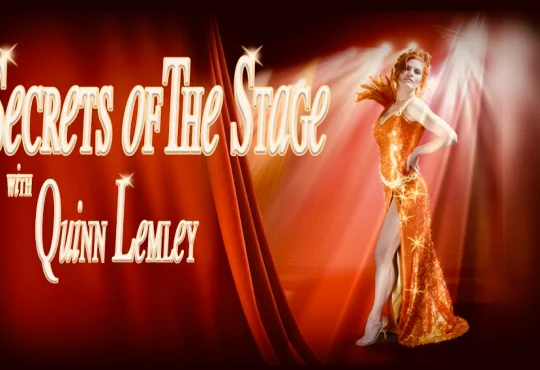‘WandaVision’ Recap: Some Assembly Required
A review of this week’s WandaVision, “Previously On,” coming up just as soon as I make breakfast for dinner…
Collaborative fiction can be a complicated thing, where any one writer’s take on a character or story can last only as long as it takes for another writer to undo it. Michael Scott’s personality on The Office seemed to shift from week to week depending on who was writing that episode. President Bartlet’s staffers started arguing with each other constantly after John Wells replaced Aaron Sorkin as West Wing showrunner.
It can be even more of a tangle in the world of comic books, where characters are often passed from one writer to the next over a half-century or more, and all it takes is a few strokes of the keyboard to change everything. One minute Spider-Man’s married, then he isn’t. He has a secret identity, then the whole world knows, then it’s a secret again. He got his powers from being bitten by a radioactive spider, but later also because Peter Parker was chosen by a mystical “spider-totem.” Few of these characters were originally created with this kind of longevity in mind, which has led to a lot of improvising and rewriting as they go from one author to the next.
Wanda Maximoff has been especially vulnerable to this phenomenon since she first appeared as one of Magneto’s henchmen way back in a 1964 issue of X-Men. At various points, her father has been Golden Age hero the Whizzer (not a name I made up, I promise), humble woodworker Django Maximoff, Magneto himself, and then… not Magneto? (Even I’ve lost track of exactly who her biological father is meant to be in the comics now.) As a member of the Avengers, she fell in love with Vision, married him, moved to the New Jersey suburbs (Leonia, not Westview), and gave birth to twin sons. Most of this evolution was the work of legendary comics writer Steve Engleheart, whose last stories with Wanda and Vision involved them joining the Avengers’ new California branch. Then Engleheart was replaced on West Coast Avengers by John Byrne, who did not seem to like Engleheart at all and set about quickly and cruelly dismantling everything his predecessor had ever done with the couple. In a story arc called “VisionQuest,” Byrne had government agents abduct Vision and take him apart; when the WCA found and rebuilt him, his body was a ghostly white and he had lost all the emotions he’d shown since his very first appearances. The marriage ended, the twins were revealed essentially to be chaos-magic-charged figments of Wanda’s imagination, and Wanda’s old mentor Agatha Harkness even turned up to get involved with the whole mess.
Sound familiar? Eventually, much of Byrne’s petulant character assassination was undone, but Wanda and Vision never fully recovered, going from core Avengers to damaged goods who now only work if a new writer has a very delicate approach for one or the other (usually her).
WandaVision isn’t doing a straightforward adaptation of “VisionQuest,” though it’s borrowing a lot of elements from it(*). The events of “Previously On” suggest the TV show isn’t using Byrne’s ideas to tear things down out of spite, but to reassemble the show’s two title characters into something stronger that draws upon all the fragmented pieces of the MCU films.
(*) My inner middle schooler is hoping that the finale somehow contrives to introduce an MCU version of my favorite Avenger, Wonder Man, who is sort of Vision’s brother, has been Wanda’s boyfriend on occasion, and was a key player in “VisionQuest.”
Initially, the title “Previously On” pointed toward another episode like “We Interrupt This Program,” where events from earlier installments would be shown via our new Agatha All Along filter. But after a brief Agatha Harkness origin story circa the Salem Witch Trials (the twist is that she’s being tried by her fellow witches, including her mother), along with the explanation that she has been messing with events in Westview but did not create this sitcom world, the episode turns into a more expanded and coherent biography of Wanda than the MCU films have been able to provide. In the process, it illustrates one of the potential upsides of writing in a shared universe: the creative challenge of getting to tie together a lot of older ideas that weren’t necessarily meant to match.
Though the MCU often comes across as a fully cohesive world masterminded at every turn by Kevin Feige, real life is messier than that, and the early Marvel movies were rougher around the edges (in conception and execution) than some of the later ones. Avengers: Age of Ultron, the movie that introduced both of this show’s heroes, for instance, had far too many moving parts both on- and off-screen. One of its best moments, the pep talk Hawkeye gives Wanda during the final battle, exists only because Jeremy Renner and Elizabeth Olsen were two of the only actors who were available when filming began. (As Age of Ultron writer-director Joss Whedon put it to our Brian Hiatt, “So, I’m like, ‘OK, I guess these guys are gonna have a scene, and I can work with that.’”)
It’s entirely possible, for instance, that Vision and Wanda both got their powers from the Mind Stone in Age of Ultron because all involved knew they would become a couple down the road, and it would be one of the things bonding them. But it certainly seemed like a matter of convenience in a wildly overcrowded film, as well as an easy way to explain Wanda and Pietro’s powers, since Marvel at the time could use both characters but wasn’t legally allowed to call them mutants. Here, though, Wanda’s Agatha-mandated therapy session includes an expanded look at her first encounter with the Mind Stone. And a mid-credits scene (the second in a row) shows that Hayward’s S.W.O.R.D. team has been able to bring Vision’s real body — as opposed to the one we learn Wanda conjured up when she created the Hex — back to life through exposure to Wanda’s powers, since at least some of them stem from the same object that created Vision in the first place. It takes what once seemed incidental and now makes it fundamental: These two exist, at least in these forms, thanks to the same cosmic object.
At the same time, “Previously On” makes clear that it’s not the gem in Loki’s scepter that really brought them together, but their respective loneliness, and Vision’s ability to be there for Wanda as she battled her grief over Pietro’s murder. Because both characters have been, at best, Avengers mid-carders, there simply wasn’t room in any of the films to let their romance play out. They flirt a bit while cooking paprikash together in Captain America: Civil War, and then they’re a full-on couple when we catch up with them in Avengers: Infinity War. They’re rarely central to the movies, even if Vision is the final sacrifice required before Thanos snaps his fingers, so Olsen and Paul Bettany previously had to make a lot out of very little.
“Previously On,” though, expands on a number of key moments that we had either heard about or just had to guess at. Agatha takes Wanda back to that fateful night in Sokovia when her parents died. She told the story in Age of Ultron, but a picture of a happy family enjoying The Dick Van Dyke Show is worth a thousand words, even if those words were originally delivered by a great actor like Olsen. In addition to forming a more concrete emotional bond with Irina and Oleg Maximoff, the scene also explains the roots of Wanda’s American TV obsession: Oleg peddled sitcom DVDs to make a living, and at night would bring them home to enjoy with the family, including the classic Dick Van Dyke Show episode “It May Look Like a Walnut” on the night when the Sokovian civil war makes its way into their apartment(*).
(*) It’s here that having Matt Shakman as the series’ director really comes in handy, because he’s directed both comedies (in addition to having co-starred in one, Just the Ten of Us, as a kid) and episodes of Game of Thrones. Whether WandaVision is doing sitcom hijinks or action spectacle, he’s up to the challenge.
While watching the tragic Sokovian scene play out, Agatha suggests that it wasn’t just luck that prevented the Stark Industries bomb from exploding, but an early and primitive manifestation of Wanda’s powers, which would later be expanded by exposure to the Mind Stone. But there’s something more happening in the scene where the Hydra scientists order her to approach Loki’s scepter. The Mind Stone flies towards her, changes color, and a woman wearing what looks like the same Sokovian fortune-teller costume — a.k.a., Wanda’s classic costume from the comics — starts floating down towards her. It may be a way for Marvel, which now has rights to the X-Men characters again, to make Wanda a mutant, or it may be that the “Scarlet Witch” to whom Agatha refers at the end of the episode is some legendary figure of myth whose title and powers have been inherited by our favorite Brady Bunch fan.
The Hydra flashback is also notable for Agatha calling out the ridiculousness of Wanda and Pietro joining an anti-freedom terrorist organization as a response to their parents’ deaths. “We wanted to change the world,” Wanda says, but it sounds as unconvincing as her accent, which Agatha calls out in an earlier scene. Both lines are acknowledgments that Wanda prior to this series was a rough sketch of a character, always having to yield time to bigger guns like Iron Man or even Black Widow (who ironically was a much lesser Avenger in the comics compared to Scarlet Witch). “Previously On” doesn’t quite make sense of all the contradictions that resulted from Wanda repeatedly being inserted into other heroes’ stories, but it at least makes a good start by admitting that a lot of her backstory doesn’t make sense.
This leads to the episode’s highlight, a scene set at the Avengers’ upstate New York compound sometime between Age of Ultron and Civil War. Wanda is watching Malcolm in the Middle when Vision interrupts to offer her a sympathetic (if synthetic) ear. She wants to disappear into her childhood memories, but he prods her into finally discussing her grief, which she compares to waves endlessly washing over her each time she attempts to stand up. For the half-dozen people who watched Olsen in Facebook Watch’s Sorry For Your Loss (still available, still outstanding), where she played a grieving widow, this isn’t new material from her, but it’s nonetheless incredibly moving. And when Vision turns poetic and asks, “But what is grief, if not love persevering?” the look on Olsen’s face fills in every last blank the movies created in their hasty set-up of this relationship. This is the man for whom she would have once risked the fate of half the universe, the man whose loss fueled her almost enough to stop Thanos single-handedly, the man she was ultimately able to recreate out of thin air, chaos magic, and her own persevering love.
We then get clarification on everything else, particularly that Hayward actually wanted Wanda to resurrect Vision, and that he goaded her into trying at S.W.O.R.D. headquarters, when all she wanted was to bury his remains. The visuals in that scene borrow liberally from John Byrne’s “VisionQuest” art, but the circumstances and the end goal seem different. The episode does conclude with a ghostly, sinister Vision, but there’s still the one that Wanda magicked up inside the Hex. Byrne used Vision’s “death” to turn Wanda evil (he wound up leaving the book midway through that story, as it turned out, so it was up to other writers to clean up his mess), where for the moment, Wanda seems more a victim of the manipulations of both Hayward and Agatha than someone inherently malevolent. With plans for her to follow WandaVision with an appearance in the next Doctor Strange film, she could still do a full heel turn. But, if so, she would be a much more well-rounded villain, and one who feels far more complex than she’s been allowed to be through her strange, winding MCU history to date.
While the couple are watching Malcolm together, we see Bryan Cranston’s poor Hal injured by a collapsing backyard pergola. Vision, new to pop culture, asks, “Is it funny because of the grievous injury the man just suffered?” Wanda assures him that Hal isn’t really injured, because “it’s not that kind of show.” WandaVision, on the other hand, is a show where people can and will get hurt. It’s also as effective as it is because it takes that pain seriously, no matter the sitcom trappings.
Some other thoughts:
* Shows glimpsed in Oleg’s briefcase include several directly homaged on WandaVision, and others that overlapped with those shows: I Love Lucy, The Addams Family, Bewitched, I Dream of Jeannie, Who’s the Boss? and Malcolm in the Middle. Modern Family didn’t premiere until 2009, so that’s one Wanda would have had to discover while she was living with the Avengers.
* Finally, in addition to “It May Look Like a Walnut” (whose episode number Wanda appears to have gotten wrong, since every site on the Internet lists it as the 20th episode of Dick Van Dyke Season Two, not the 21st), we see Wanda watching scenes from The Brady Bunch‘s “Kitty Karry-all Is Missing” and Malcolm‘s “Health Insurance.” “Kitty Karry-all Is Missing” actually has a half-decent thematic tie to this story, since it involves Bobby Brady being falsely accused of stealing Cindy’s new doll, when it turns out the real thief was the family dog, Tiger, all along.







